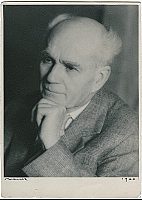Autochromes by Karel Šmirous
“100 Years of Autochrome ” — Tenth exhibition of Šechtl & Voseček Museum of Photography.
Czech scientist and pioneer of color photography, Karel Šmirous (1890 – 1981), is the only Czech photographer who specialized in color photography using the Autochrome process. He published color postcards of excellent technical quality, and presented lectures and exhibitions with color photographs and 18×24 cm Autochrome slides. He also published a number of books, and prepared a representative booklet, “Czechoslovakia”, for the 1958 World Expo in Brussels.
Still lifes
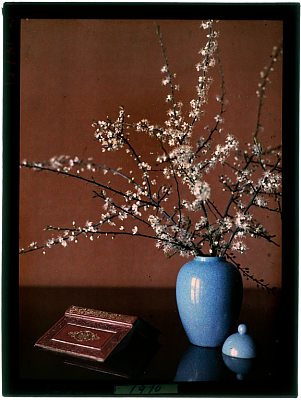
-
Unnamed
Karel Šmirous (–)
Autochrome 9×12 cm,
Owner of the original autochrome: National Technical Museum All rights reserved, use of the digital reproduction is possible only with written permission from the owner of photograph 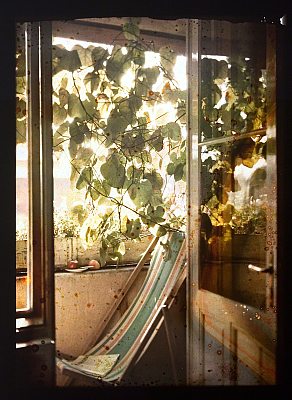
-
Unnamed
Karel Šmirous (–)
Filmcolor 13×18 cm,
Owner of the original autochrome: Private collection in Prague All rights reserved, use of the digital reproduction is possible only with written permission from the owner of photograph 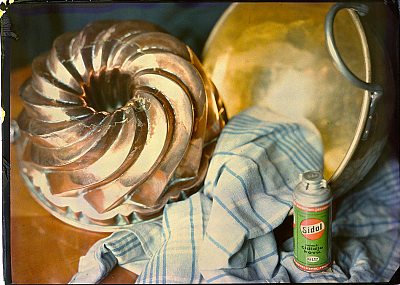
-
“Sidol” cleaning agent advertisement
Filmcolor 13×18 cm,
Owner of the original autochrome: Private collection of Jindra Mikulíčková All rights reserved, use of the digital reproduction is possible only with written permission from the owner of photograph 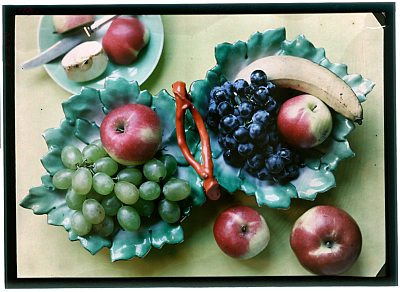
-
Unnamed
Karel Šmirous (–)
Filmcolor 13×18 cm,
Owner of the original autochrome: National Technical Museum All rights reserved, use of the digital reproduction is possible only with written permission from the owner of photograph
Portraits
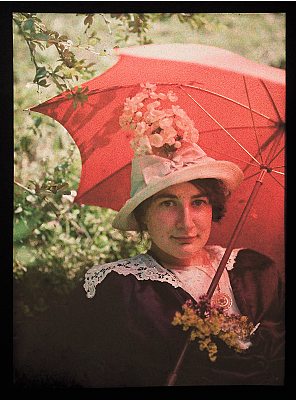
-
Unnamed
Karel Šmirous (–)
Autochrom 9×12 cm,
Owner of the original autochrome: Museum of Decorative Arts in Prague All rights reserved, use of the digital reproduction is possible only with written permission from the owner of photograph 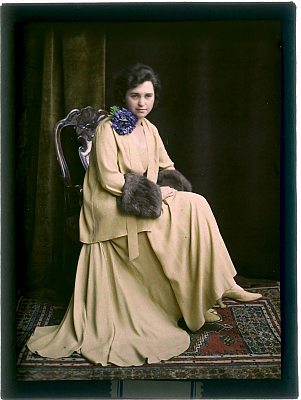
-
Unnamed
Karel Šmirous (–)
Autochrom 9×12 cm,
Owner of the original autochrome: Private collection of Jindra Mikulíčková All rights reserved, use of the digital reproduction is possible only with written permission from the owner of photograph 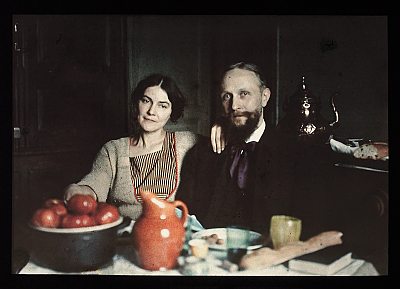
-
Painter Henri Rious (1877–1944) with wife, Marseille
Karel Šmirous (–)
Autochrom 13×18 cm,
Owner of the original autochrome: Museum of Decorative Arts in Prague All rights reserved, use of the digital reproduction is possible only with written permission from the owner of photograph 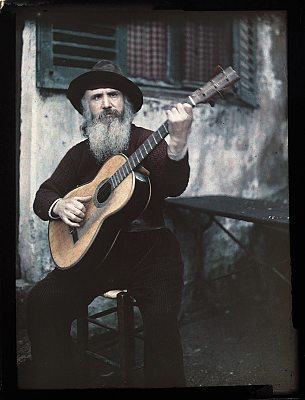
-
Probably painter Henri Rioux, Marseille
Autochrom 13×18 cm,
Owner of the original autochrome: Museum of Decorative Arts in Prague All rights reserved, use of the digital reproduction is possible only with written permission from the owner of photograph 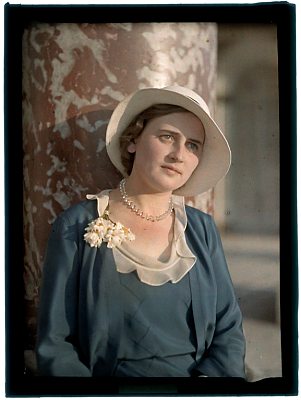
-
Unknown portrait named “Maria”
Karel Šmirous (–)
Filmcolor 9×12 cm,
Owner of the original autochrome: National Technical Museum All rights reserved, use of the digital reproduction is possible only with written permission from the owner of photograph 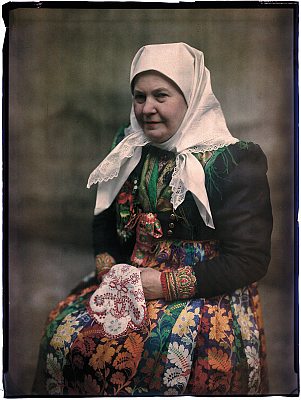
-
Woman from Domžlice in ceremonial costume
Karel Šmirous (–)
Filmcolor 18×24 cm,
Owner of the original autochrome: Private collection of Jindra Mikulíčková All rights reserved, use of the digital reproduction is possible only with written permission from the owner of photographThis photograph, together with 137 other photos, was published in 1956 in a book by Božena Šotkova and Karel Šmirous, “Czechoslovak National Costumes in Color Photography”. The description in the book reads: “Blue coat is decorated with colorful silk. On her head she has a black kerchief with flowers in the corners. On ceremonial occasions the woman fastens over it a white cloth that is one of the most valuable parts of the costume”.
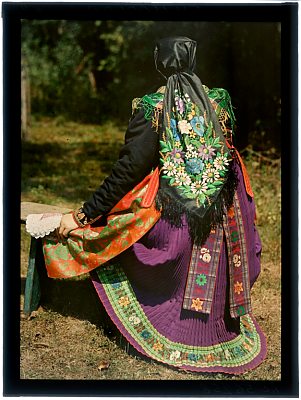
-
Woman in ___ costume
Karel Šmirous (–)
Filmcolor 13x18 cm,
Owner of the original autochrome: National Technical Museum All rights reserved, use of the digital reproduction is possible only with written permission from the owner of photograph
Photographs from travels
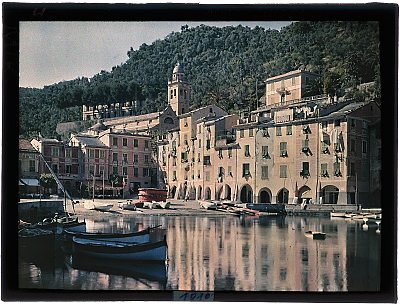
-
Portofino: Italian Riviera
Karel Šmirous (–)
Autochrome 9×12 cm,
Owner of the original autochrome: Private collection of Pavel Scheufler All rights reserved, use of the digital reproduction is possible only with written permission from the owner of photograph 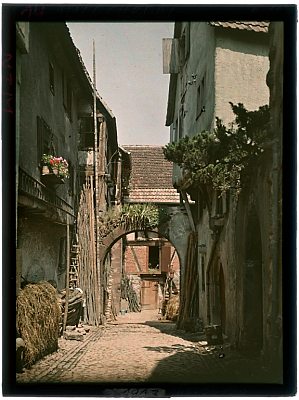
-
Probably Kaysersberg, old Yard
Karel Šmirous (–)
Autochrome 9×12 cm,
Owner of the original autochrome: National Technical Museum All rights reserved, use of the digital reproduction is possible only with written permission from the owner of photograph 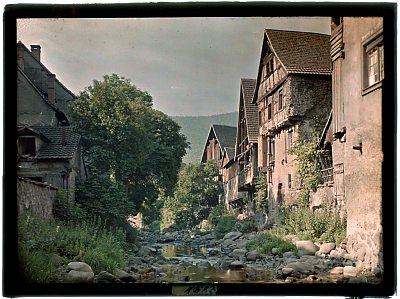
-
Probably Kaysersberg
Karel Šmirous (–)
Autochrome 9×12 cm,
Owner of the original autochrome: National Technical Museum All rights reserved, use of the digital reproduction is possible only with written permission from the owner of photograph 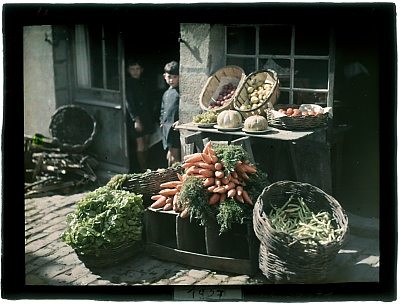
-
Vegetable shop — Hannebont, Brittany
Karel Šmirous (–)
Autochrome 9×12 cm,
Owner of the original autochrome: National Technical Museum All rights reserved, use of the digital reproduction is possible only with written permission from the owner of photograph 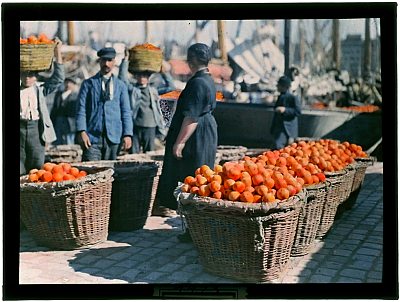
-
Marseille - Spanish ship unloading oranges
Karel Šmirous (–)
Autochrome 9×12 cm,
Owner of the original autochrome: National Technical Museum All rights reserved, use of the digital reproduction is possible only with written permission from the owner of photographThe beautiful atmosphere of this photograph is partly result of retouching – the photograph has an overall blue cast, which has been colored to avoid the otherwise flat feeling.
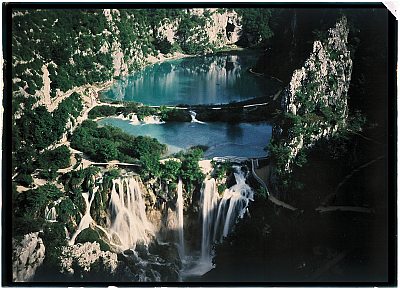
-
Plitvice lakes with waterfalls
Karel Šmirous (–)
Filmcolor 13×18 cm,
Owner of the original autochrome: Private collection of Jindra Mikulíčková All rights reserved, use of the digital reproduction is possible only with written permission from the owner of photographBeautiful Plitvice lakes and waterfalls were always a popular subject for photographers and film makers. On a trip to Croatia it was photographed also by Czech photographer Bruner-Dvořák, and a number of movies were made here, probably the most famous being “Vinnetou”, filmed in 1965.
Photographs from Bohemia
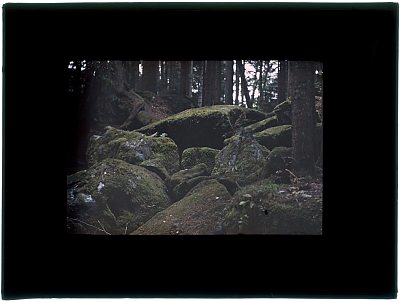
-
Forest in Boubín
Karel Šmirous (–)
Autochrome 9×12 cm,
Owner of the original autochrome: National Technical Museum All rights reserved, use of the digital reproduction is possible only with written permission from the owner of photograph 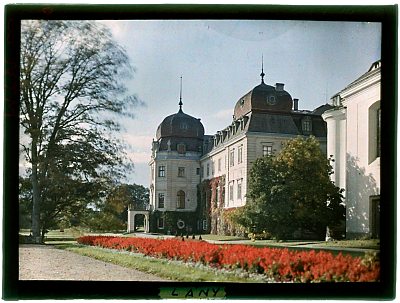
-
Lány: Castle with autumn vegetation
Karel Šmirous (–)
Autochrome 9×12 cm,
Owner of the original autochrome: National Technical Museum All rights reserved, use of the digital reproduction is possible only with written permission from the owner of photograph 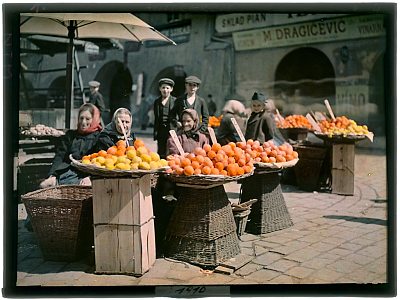
-
Oranges in Uhlený trh (“Coal Market Square”), Prague
Karel Šmirous (–)
Autochrome 9×12 cm,
Owner of the original autochrome: National Technical Museum All rights reserved, use of the digital reproduction is possible only with written permission from the owner of photographThe atmosphere of this photograph suggests more a market in some Mediterranean city, but it was taken in fact in Prague, as can be seen from the writing on the houses. Oranges were a very good subject for Autochromes, since orange is one of the primary colors in the mosaic, and thus their color appears very vividly in the picture. In this case however Karel Šmirous helped the Autochrome by careful retouching – the oranges and lemons are bit colored. This manipulation helps to emphasize the blue colors in the rest of picture.

-
Stromovka Park, Prague
Karel Šmirous (–)
Autochrome 9×12 cm,
Owner of the original autochrome: Museum of Decorative Arts in Prague All rights reserved, use of the digital reproduction is possible only with written permission from the owner of photograph 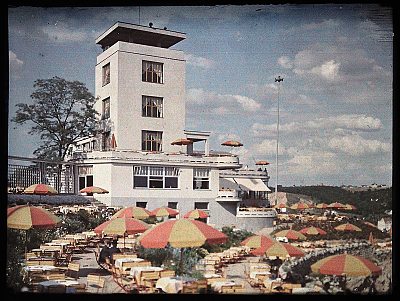
-
Barrandov Terrace
Karel Šmirous (–)
Autochrome 9×12 cm,
Barrandov terrace is one of the most famous examples of functionalist architecture in the Czech Republic. The building, opened in 1929, was inspired by the restaurant pavilion Cliff House in San Francisco, on a rock over the Pacific Ocean, that was visited in 1924 by Václav Havel (father of Václav Havel, later president of Czechoslovakia).This famous building constructor asked the architect Max Urban to design this building, who also designed the film studio nearby, and the Barrandov villa quarter.Owner of the original autochrome: Museum of Decorative Arts in Prague All rights reserved, use of the digital reproduction is possible only with written permission from the owner of photograph
Photo journalism
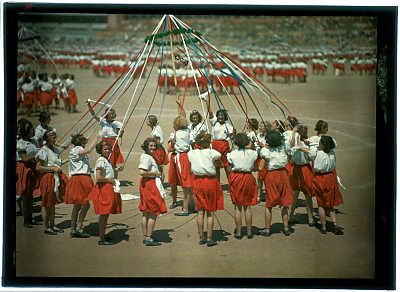
-
10th Sokol Meet (Slet) in Prague
Karel Šmirous (–)
Filmcolor 13×18 cm,
Owner of the original autochrome: National Technical Museum All rights reserved, use of the digital reproduction is possible only with written permission from the owner of photographThis was the last Sokol Meet before WWII. The meet started in October 1937, and was run over 10 routes of length 4185 km. From Tyrš‘ house, the message was brought by 42,000 runners to the countries on the Czech border, and also to Subcarpathian Ruthenia. 348,086 gymnasts participated in the meet, and 2.3 million spectators came to watch. As well as Sokols from Slavic countries, there were also small groups from Dresden, Berlin and Munich. In the procession, they were forced, like the Vienna Sokols, to march with the Nazi flag.
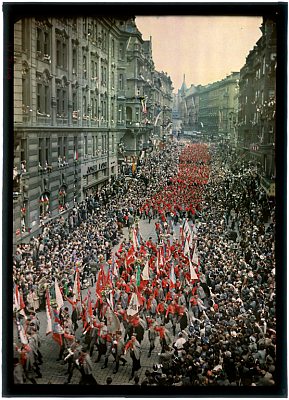
-
10th Sokol Meet (Slet) in Prague
Karel Šmirous (–)
Filmcolor 13×18 cm,
Owner of the original autochrome: National Technical Museum All rights reserved, use of the digital reproduction is possible only with written permission from the owner of photographThe Sokol movement (from the Czech word for falcon) is a Czech and Slavic youth movement and gymnastics organization founded in Prague in 1862 by Miroslav Tyrš and Jindřich Fügner. Sokol, through fitness training, lectures, discussions, and group outings provided what Tyrš viewed as physical, moral, and intellectual training for the nation.
“Slet” comes from the Czech word for “a flocking of birds”, and is a mass gymnastics festival, that became a grand tradition within the Sokol movement. First Slet was held in 1882, with 1572 Sokols exercising. The Slet pictured was held on the eve of the Munich Agreement of 1938, and Slets were later brutally suppressed within the Protectorate. Sokol was banned during the Nazi occupation of the Czech lands. After World War II, one more Slet was held, in 1948, before they were once again suppressed, this time by the Communists. The Communist party tried to replace the tradition of Slets with mass exercises employed for propaganda purposes, called Spartakiads (Spartakiády). Sokols reappeared briefly during the Prague Spring of 1968, but the next Slet was not held until 1994 (with 23,000 Sokols attending), well after the fall of Communism.
— Excerpts from www.wikipedia.org
Scientific photography
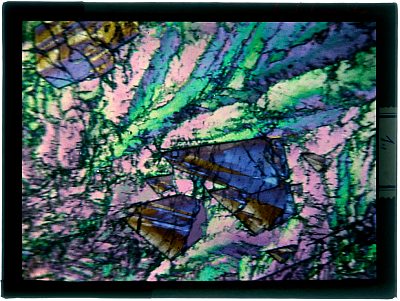
-
Minerals
Karel Šmirous (–)
Filmcolor 9×12 cm,
Owner of the original autochrome: National Technical Museum All rights reserved, use of the digital reproduction is possible only with written permission from the owner of photographThis photograph of mineral is a good example of the scientific use of Autochrome. At the same time however, the photograph shows beautiful color and composition.
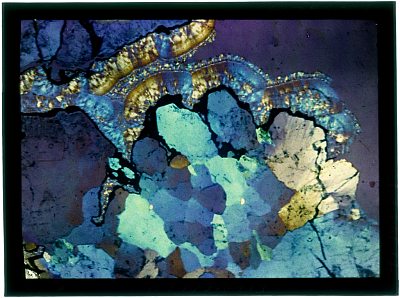
-
Minerals
Karel Šmirous (–)
Filmcolor 9×12 cm,
Owner of the original autochrome: National Technical Museum All rights reserved, use of the digital reproduction is possible only with written permission from the owner of photograph
